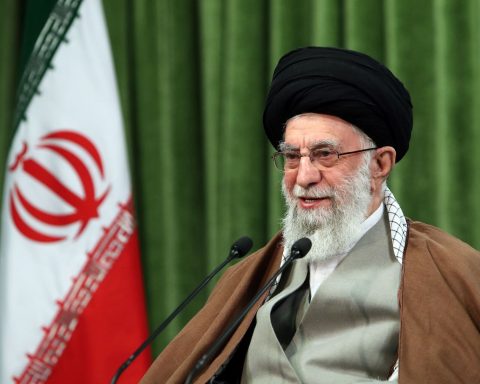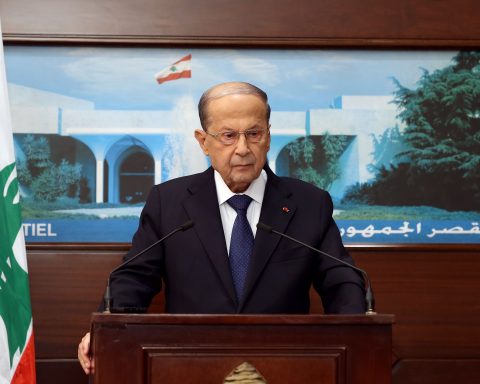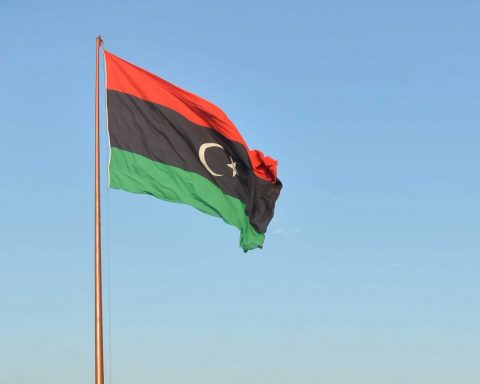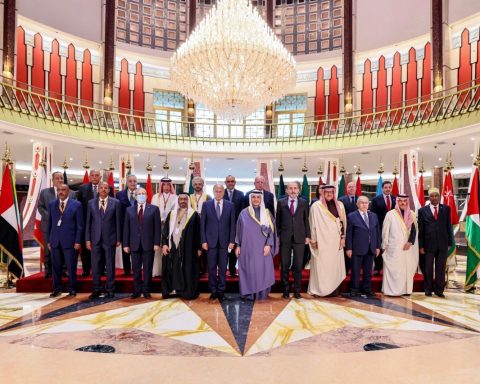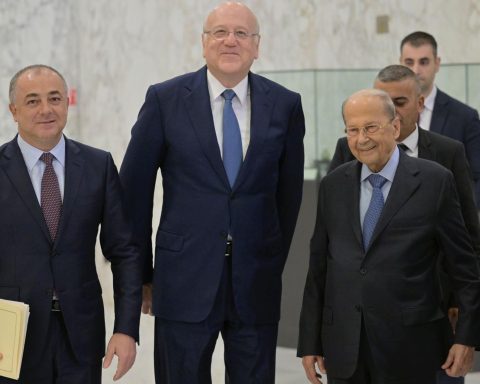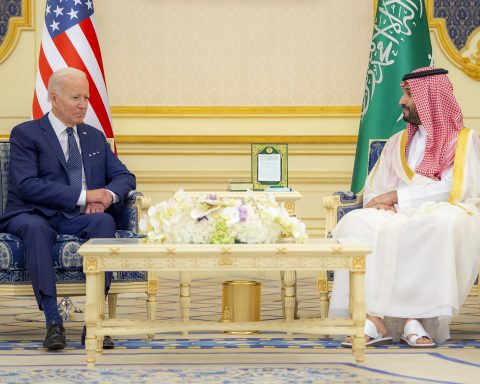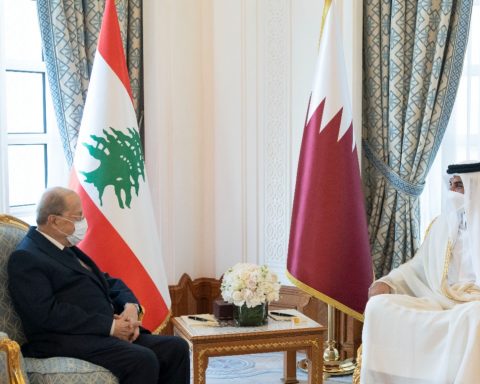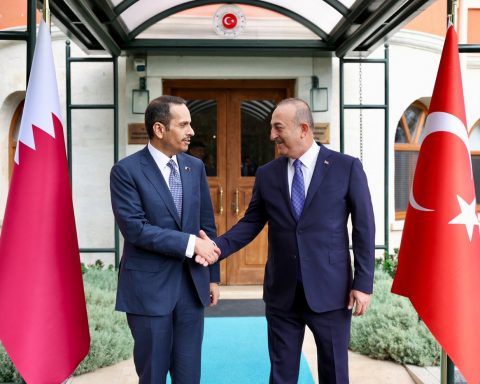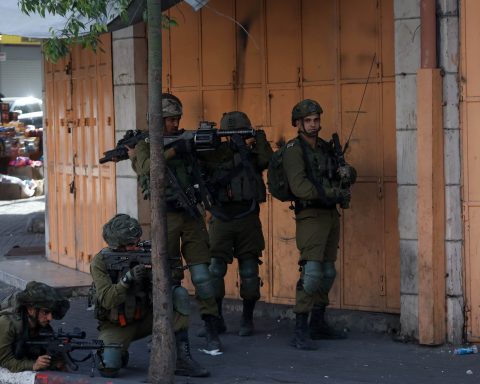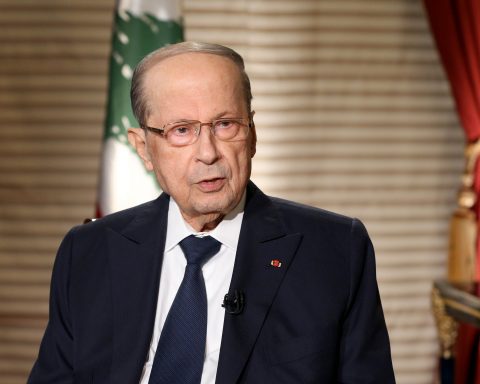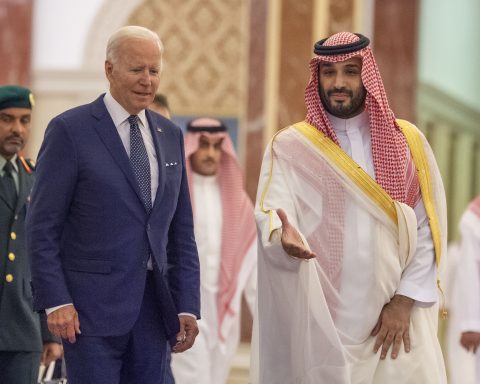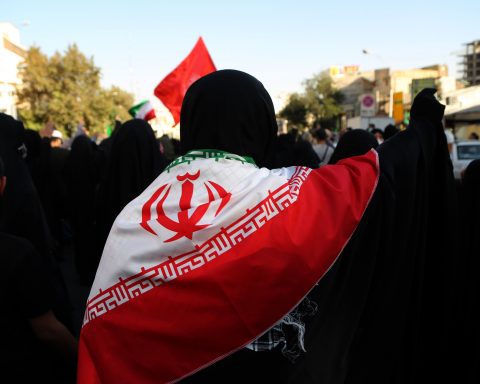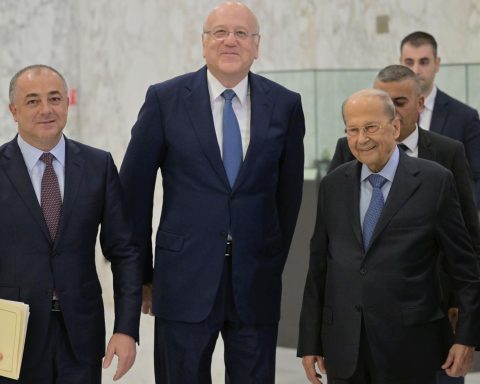The head of the US-backed Syrian Democratic Forces (SDF), Mazloum Abdi, said on Sunday that his forces were “open” to working with Syrian government troops to fight off Turkey, saying “Damascus should use its air defense systems against Turkish planes,” Reuters’ Maya Gebeily reported on June 5.
“Mazloum Abdi’s return to the regime for assistance demonstrated that the SDF is not part of the Syrian revolution,” Radwan Ziyade of the Arab Center in Washington DC reacted on Syria TV, an opposition channel.
Syria TV reported on Sunday that the SDF met with the Russians and the regime in Ein Eissa, in Raqqa province.
Last Thursday, the author talked to Syrian Kurdish political writer Mohamed Ismail, member of the presidium of the Kurdish National Council (KNC) in Syria and head of the KNC delegation to the intra-Syrian-Kurdish talks. The KNC is the rival bloc to the Democratic Union Party (PYD) and its other smaller party allies, and is an opponent of the Assad regime. This is the main difference between the KNC and the PYD. Ismail is the highest representative of the KNC in the region.
What are the current relations between the SDF and the regime? “It cannot do anything without the Americans. It can take some movement on the side. The Americans could allow this: “see the regime, see the Russians,” Ismail says. There are relations between the SDF and the Russians, logistical in certain points, and the US gives a bit of space, but as a result, it doesn’t do anything without US consent, likewise for the regime” Ismail expresses.
So, the Americans agreed that the regime entered the SDF areas? For example, in Tel Rif’at and partly at the Northeast Syrian border in 2019? “I don’t know about this part, but the SDF tries to hand over areas to the regime, and this is leaked news from their circles, and they also announce it before the Turks come, to hand over areas to the regime. The regime is preferable for the SDF in comparison to Turkey. I do not know to what degree the Americans agreed or not.”
But where did you get this information from? Was this in the media, or from other sources? “There are special sources among them.” Since when? “Since when Turkey announced it would enter, this was the conversation between them,” Ismail stated. “Whatever happens between them, their words come to us, and the situation between them, we hear while we are following and, on the ground there and among the people.”
How are the relations between them and the regime now? “Look, the relations with the regime are of two types. Relations between the PKK and the regime are ongoing and have not stopped for a single day, and they exist at all levels. The SDF’s relations with the regime, as well as their tactics with the regime, are what the US allows them to do on the sidelines. So, they will not bother the Americans,” Ismail indicated.
“Sabri Ok, visited Damascus recently. Is he the mediator between the SDF and the regime? “He and other leaders of the PKK too. He is with Damascus.” Is he Syrian or..? “He is a Turkish PKK.” Where does he live, inside Syria? “Inside Syria, of course, how can one go to Damascus and go back. “
“In the Western part of Northern Syria, the YPG coordinates with the Russians, while in the east with the Americans,” Abdallah al-Hafi says. He is the Kurdish-Arab Syrian Local Councils Unit Director in Azaz. “There was a before Ayn Daqna, and there was an after Ayn Daqna,” Abdallah explains. The YPG practices were a point of no return for the Arab locals in the areas neighboring Afrin. “There was no intention of the Free Syrian Army (FSA) to enter Afrin. There were no problems at all. Not between the Assad -opposed Kurds and the Assad -opposed rebels. Firstly, the YPG made a Russian base in Afrin, in Kafr Janna, and Russia entered. Secondly, when the regime was besieged in Nubul and Zahraa, they let them escape. Thirdly, there was Ayn Daqna. It became a war. One sees his brother’s corpse, or his cousin’s, or his friend’s, and the YPG militants put the corpses on a loader and parade them. After that, it was over. The peace ended. They tried to take Azaz, if they could,” Al-Hafi stated.
“The battle for Tel Rif’at was with Russian and regime airplanes bombing Tel Rif’at, and on the ground, the Kurdish YPG took it.” Back then, in 2016, Tel Rif’at was controlled by the FSA. “There was coordination between Russia, the regime, and the YPG. The bombing caused the people to flee, and there was a total war in the area. They organized it completely. Furthermore, the Russians have a military base in Tel Rif’at, and regime soldiers entered Tel Rif’at. The same happened in Afrin. This is proof that they are coordinating among each other” al-Hafi indicates.
The regime and the Kurdish areas
The defected security director of Qamishli, in Syria’s northeast Hasakah province, told me: “I got orders to hand over all police departments to the PYD/YPG. We even handed them the new weapons and equipment we received months ago.”
In Afrin City, Koran Ahmad, the Kurdish chairman of the board of Bahar, an NGO working in opposition-held and SDF-held parts of northern Syria, told the author:
“It was in June or July 2012, the PYD announced a curfew, so the people wouldn’t leave the house. We heard a few shots. I was standing on the balcony, there was nothing on the ground. Two hours later, they said we had the victory over the regime and we took the areas. Now, there is no Syrian regime here anymore. And really, the next day, when we went out on the street, the regime wasn’t there anymore. So, this happened within one day? Within three or four hours, not a day. They said we won from the regime with the fact that the regime elements stayed but changed their clothes from military to civil and stayed among the people. Afrin was special in all of northern Syria. There were seven security branches. Even military security was present in Afrin. State security, criminal and political security, etc., were all present in Afrin.”
The official announcement was in 2012. Ahmad Misto, a Kurdish leader of the biggest SNA brigade al-Jabha al-Shamia, told the author, “But secretly, it started in September 2011.”
How did it start?
From the early 1980s until 1988, Hafez al-Assad’s regime hosted the PKK in Yafour, Zabadani, and Lebanon’s Bekaa Valley. Assad’s objective in supporting the PKK was to gain leverage over its much larger northern neighbor, so as to influence various territorial and water disputes. The PKK’s long-standing presence highlights the contrast between the Syrian regime’s treatment of domestic Kurdish political and militant activity and its treatment of externally-oriented Kurdish political and militant activity on Syrian soil. The former was harshly suppressed in most cases; the latter was supported. Such support was naturally conditioned on the PKK staying out of Syria’s domestic politics. Instead of mobilizing Syria’s Kurdish community against Damascus, the PKK harnessed it for its war against Turkey. From the PKK’s point of view, the Syrian Kurdish community became a recruitment pool for its war in Turkey.


